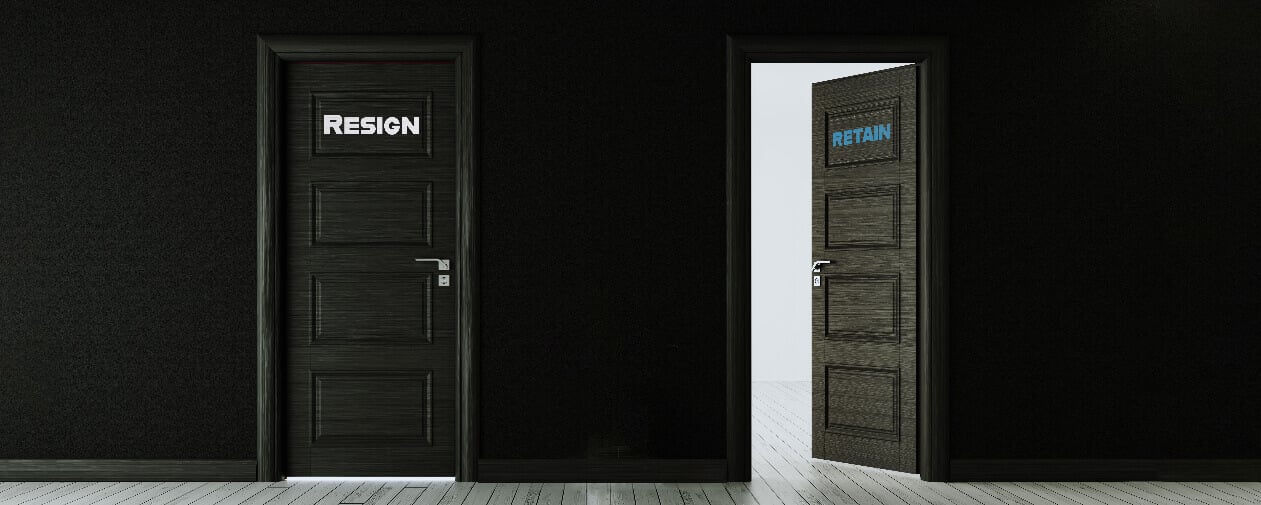“The Great Resignation” may be fading into a new phase, but its warning is clear. Retailers that want to stay ahead of the hiring curve should heed the necessity to create long-term solutions to recruiting and retaining employees.
The Recruitment Conundrum
In February 2022, the net quit rate was 2.9%. This is minimal and doesn’t seem to match up with the extreme labor shortages employers around the nation experienced. But, according to the Bureau of Labor Statistics, while 4.4 million workers left their jobs, about 6.7 million people were simultaneously hired. Although the pandemic did hit jobs in retail and hospitality harder because they involve more person-to-person contact, it’s apparent that the challenge of gaining new hires isn’t as important as keeping them from quitting once they come aboard. Hence, a successful retail talent strategy revolves around retention initiatives.
A recent Harris/USA Today poll found that 20% of 2,000 adults surveyed who quit during the past two years now regret it. Twenty-five percent said they miss the job culture of their previous employer.
According to a 2022 Retail Industry Outlook survey by Deloitte, 83% of retail executives are having to invest most heavily in recruiting new employees and retaining them. In response to shifting retail worker expectations, there is widespread agreement that a well-staffed future calls for veering from traditional approaches and reconsidering your talent strategy.
The key question retailers must ask themselves is this: What can I do to make new employees feel welcome, respected, appreciated, and overall happy so they will be committed to working here? The following best practices will get you started in the right direction.
Take Action to Create Attraction
Retail employees are seeking job fulfillment in a variety of ways. They do want higher wages and comprehensive benefits such as healthcare coverage, but research shows that they also want predictable yet flexible work schedules, purposeful roles, meaningful responsibilities, and more opportunities for career growth.
If you haven’t already, you’ll need to reconfigure your benefits package in a way that appeals to today’s candidates and differentiates your offerings from those of competing retailers. It should be obvious that you’ll hire faster when you inform prospects of not only their benefits package, but also of the many advantages becoming a part of your team and your brand offers.
Diversity and inclusion are important to many younger workers, so integrate these practices into your hiring processes. Demonstrate that you are committed to D&I and that it is part of your culture. And mere policy changes aren’t enough. Research shows that many prospective hires won’t accept a job offer unless they observe diversity in your business practices.
Automated recruitment filters are in widespread use, but they can have a downside, in that they may inadvertently exclude well-qualified workers who might ordinarily not be on your radar but who would make ideal employees.
Over-extending your list of requirements can also be an applicant-stopper. A huge list of specific qualifications overlooks the distinct possibility of retailers’ ability to train new hires for roles once they start. Don’t unnecessarily narrow your applicant pool this way.
Hire for Attitude, Train for Skill
This is the suggestion of Francesca Nicasio in her article, Hiring in Retail: 10 Tips to Find and Recruit Superstar Employees. Candidates who demonstrate the following traits should be on your radar:
- Eagerness to learn
- Patience
- Relaxed with people
- Team orientation
- Empathy
- Willingness to contribute
- Emotional intelligence
- Passion for your brand
As you interview candidates, sort through their most pronounced character traits to more specifically identify the kinds of roles and career paths for which they are most suited. Always hire with an eye toward a new hire’s future potential.
Want More Applicants? Prioritize These New-Hire Must-Haves
Purpose and Meaningful Engagement
People join companies with brands that they can identify with. Job candidates are seeking to represent brands that reflect values they personally share. When they apply to work for retailers, they are seeking to fulfill a purpose that transcends income; they see their job as a way to both express themselves and fulfill a deeper purpose.
Retail executives should explore ways to create a purposeful culture that participates in or supports the broader community. Your store’s culture should welcome new employees as integral to growing the business. Invite their input, and encourage them to share ideas that help build the business and take responsibility for shaping it as it evolves to meet changing customer preferences.
Make sure your brand’s values and any commitments you have to social responsibility carry over into how you treat employees and the quality of their work. To unify what employees care about along a potentially expansive career path, imbue their roles with ways to engage with the brand and other members of the team.
Flexible Scheduling
A flexible environment that gives employees different avenues for remote work is a profound perk. Retailers who have more fully embraced digital involvement with both customers and other staff are in the best position to enable employees to take advantage of the opportunity to occasionally work off-site.
Employees also want supervisors who accept the occasional day off to participate in their children’s school activities, meet a contractor at home, or tend to personal needs. To accomplish this, retailers should consider integrating part-time and job-sharing arrangements and flextime into their scheduling.
SHRM.org notes: “Even in the absence of a pandemic, flexible work arrangements can improve recruitment and retention efforts, augment organizational diversity efforts, encourage ethical behavior, and help the organization’s efforts to be socially responsible. Employers can experience cost savings, improved attendance and productivity, and an increase in employee engagement.”
On-Demand Pay
For retail workers who live paycheck-to-paycheck, financial stress is a fact of life. To assuage the stress, employees appreciate receiving access to earned wages, also referred to as “pay on demand.” This keeps them from having to wait for their monthly or bi-monthly check.
Training And Upskilling the New Associate
A retail store’s onboarding and training approaches set the tone for what new staff can expect in their workaday world. In fact, how retailers conduct their onboarding and training can be a magnet for recruitment.
Explore training apps that make job preparation a fun and engaging experience. Make ongoing training and upskilling a continuous focus for employees. It’s a two-way street: Not only does this constantly improve employee capabilities, but it also shows you care about your employees and how your store and your brand are presented to customers.
As Accenture notes in its Store of Tomorrow report: “Retailers need to invest in their workforces by offering retraining and upskilling programs, while ensuring they build workplaces that are inclusive and able to maximize the unique value that each individual brings.” As you onboard and train, and your new hires develop on-the-job skills, keep an eye out for demonstrated aptitudes that fit certain individuals so you can potentially match them with a rewarding, long-term retail career.
Recognize that the new store associate now does more than sort and shelve merchandise and ring up purchases. Associates are expected to conduct one-on-one conversations with shoppers, who are seeking guidance to affirm they are making the right buying decision.
Online shoppers are used to exploring merchandise in detail well before coming into the store. They have likely searched several websites and conducted price and feature comparisons via websites and social posts. By the time they are ready to see and touch merchandise, they are looking forward to speaking with someone familiar with the product who can guide them toward a purchase…or toward another similar product that meets their needs.
To fulfill customers’ demands for deeper and detailed guidance during interactions with associates, retailers should consider equipping associates with digital tools that allow them to connect customers with up-to-date product and inventory knowledge. More than ever before, customer interactions call for instantaneous information from departments such as merchandising, inventory, stock, and management. Training and upskilling employees in all relevant areas can maximize their potential and contribution each day.
The New Digitized Workforce Reigns
Research conducted by Accenture and featured in its Store of Tomorrow report reveals that employee expectations for a supportive work environment have risen dramatically. They want their jobs to empower them with purpose, and, just as omnichannel shopping has become the norm, they expect their work to seamlessly blend digital and face-to-face experiences.
Just as retail consumers seek engaging, digitally driven, brand-enhancing, retail shopping experiences, retail employees seek these same kinds of experiences in their jobs.
Digital processes can increase retail productivity. Progressive retailers recognize that the modernized workforce requires connectivity with platforms and tools to conduct a variety of retail functions. No longer are employees working in a vacuum; the modern store is a connected store, where the sales floor is constantly in touch with the back office, inventory, and managers. Even if your store is not fully up to speed on digital communications, ensure your training encompasses digital upskilling as required so they are prepared for what comes next.
The Ideal Retail Workforce
A successful retail workforce must be ready for what retailing will look like today, tomorrow, and beyond. Accenture’s report on reimaging the retail workforce suggests that it’s up to retailers to create a retail workforce that is:
- Able to quickly adapt to changing roles and responsibilities
- Digital, data fluent, and diverse
- Ready to accept management investment in constant reskilling and upskilling
- Excited about the idea of working in an environment that is systematically reimagined and reinvented
- Prepared to serve customers in ways that suit their preferences and that may include interacting with them remotely
Ready to talk?
Like many iconic retail brands across America, you can rely on MarketSource to improve your customer experience, accelerate sales, and manage your most pressing challenges.


